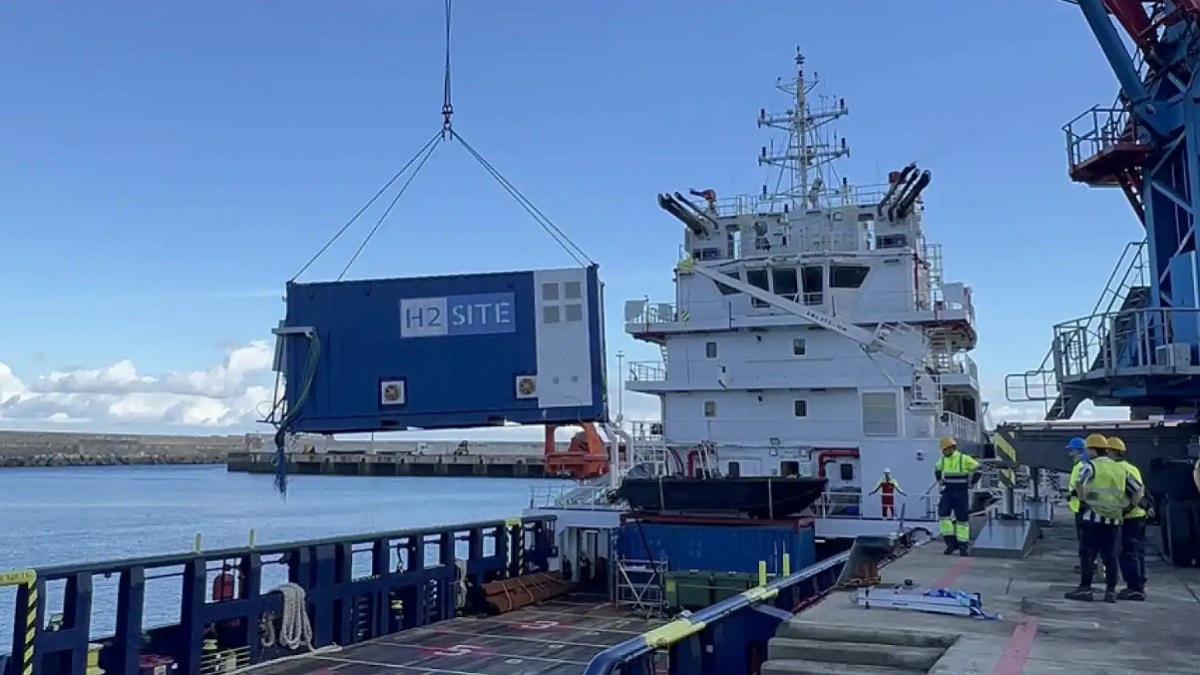Bizkaia
The first hydrogen and ammonia ship in the Bay of Bizkaia

November 28, 2023 | 2:03 pm
In the waters of the Bay of Bizkaia, a new page is being written in the history of navigation and maritime sustainability. It is the first ship capable of producing hydrogen on board from ammonia, an innovation that could revolutionize maritime transport. This initiative, the result of collaboration between research entities and technology companies, promises to be a crucial step in the search for sustainable solutions for one of the most challenging sectors in terms of decarbonization.
The ship Bertha B, which sailed on Last November 18 from the Port of Bermeo, is the protagonist of this technological advance. Equipped with a system that transforms ammonia into high-purity hydrogen, it powers a fuel cell that in turn generates electricity for the ship's auxiliary services. This hydrogen production system is not only a world first, but also an example of how technology can contribute to reducing greenhouse gas emissions in maritime transport.
Cutting-edge technology for a cleaner future
The technology implemented in the Bertha B is the result of the H2Site project, a collaboration between Tecnalia, Engie New Ventures and the Eindhoven University of Technology. With its unique membrane reactor technology, the system converts various raw materials into hydrogen, reducing ammonia consumption and optimizing space on board the vessel.
This innovation not only represents an advance in system efficiency and compactness, but is also a step forward in the expansion of higher power units and the integration of cleaner energy sources in the maritime sector. The success of this project highlights the potential of hydrogen as a clean fuel, especially in a sector such as the maritime sector, historically dependent on hydrocarbons.
The role of ammonia in hydrogen production
Ammonia plays a crucial role in this innovative process. Being one of the most transported liquids worldwide, its supply chain is well known and can be used both directly in engines and transformed into hydrogen for use in fuel cells. The choice of ammonia as a feedstock for onboard hydrogen production highlights its versatility and potential as a sustainable solution in maritime transport.
This milestone in the Bay of Biscay is not an isolated case, but part of a global effort to find cleaner alternatives to conventional fuels in maritime transport. With initiatives such as H2Site and the use of renewable hydrogen, the sector is looking for ways to reduce its carbon footprint and contribute to the fight against climate change.
The H2Site project and the Bertha B vessel represent a tangible example of how innovation and collaboration can lead to the development of disruptive technologies that positively impact the environment. This advance is a significant step towards a more sustainable future in maritime transport and a model to follow in the search for ecological solutions.
More news
Susper gets the third grade
May 1, 2024 | 7:20 p.m.
The Basque Government has granted the third degree to Ibon Fernández Iradi, known as "Susper" and former head of the terrorist group ETA. This decision is…
